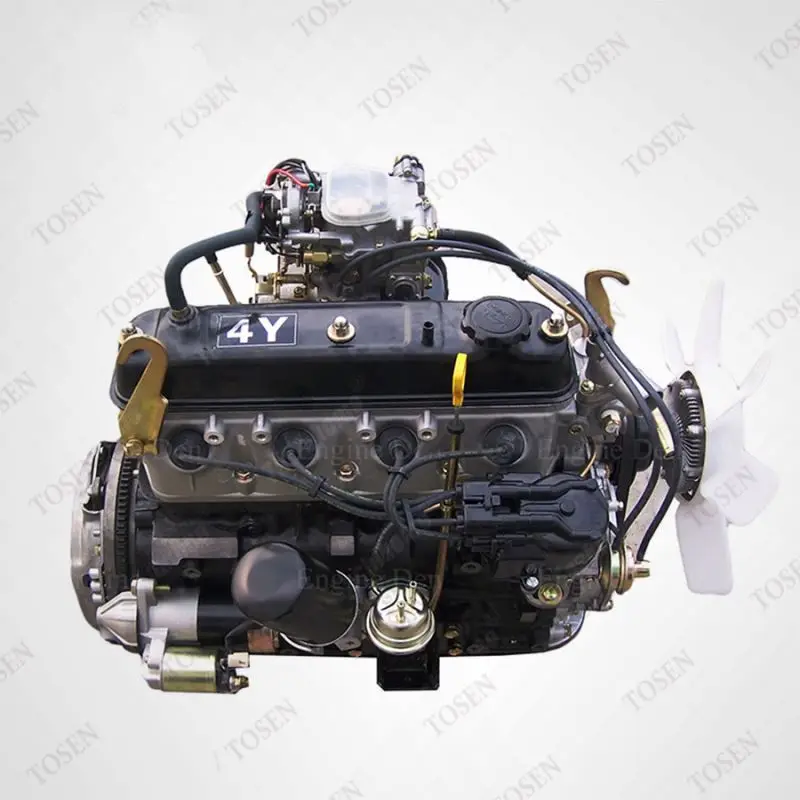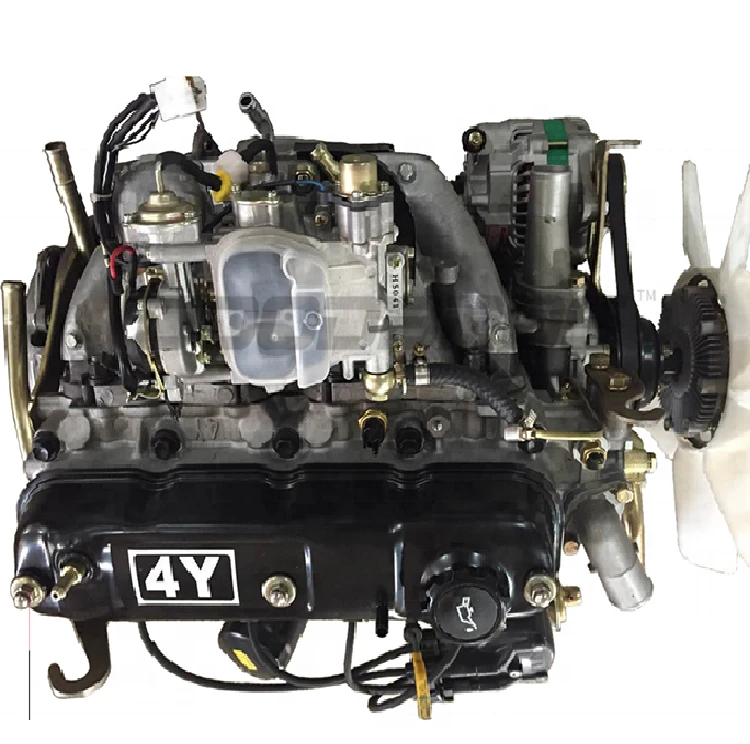The History and Evolution of the 4Y Engine in Automotive Engineering
The History and Evolution of the 4Y Engine in Automotive Engineering
Blog Article
Why the Engine Is the very best Option for Performance and Effectiveness in Your Auto
The engine remains a critical part in automobile style, mainly because of its significant influence on both efficiency and effectiveness. As improvements in modern technology allow smaller engines to deliver exceptional power while maximizing gas economic situation, the assimilation of functions such as turbocharging and crossbreed systems becomes progressively crucial. These advancements not just boost driving experience however likewise address ecological concerns. Nonetheless, the concern arises: just how do these elements integrate to redefine our understanding of automobile efficiency? Discovering this balance discloses much deeper understandings right into the future of engine design.
Recognizing Engine Types
Comprehending the various sorts of engines is vital for enhancing efficiency and effectiveness in auto style. The primary engine types include inner burning engines (ICE), electric engines, and hybrid systems, each offering distinct advantages and limitations.
Internal combustion engines, which can be more categorized into gas and diesel variants, rely upon the burning of gas to generate power. Gasoline engines typically offer higher RPMs and far better acceleration, while diesel motor are known for their torque and gas efficiency, making them perfect for durable applications.
Electric engines, on the various other hand, make use of electrical motors powered by batteries or fuel cells. They offer rapid torque shipment, causing smooth velocity and lower exhausts. The effectiveness of electric engines is considerably more than that of ICEs, making them a preferred selection for eco-conscious consumers.
Crossbreed systems integrate both interior burning and electric engines, leveraging the staminas of both innovations. They enhance gas consumption by utilizing electric power at lower speeds and changing to fuel or diesel for higher speeds or heavier lots.
Picking the appropriate engine kind is necessary for achieving preferred performance metrics and ecological sustainability in modern vehicle design.
The Influence of Engine Dimension
Engine dimension frequently plays a pivotal role in identifying an automobile's performance and effectiveness. Generally gauged in litres or cubic centimeters, engine dimension directly influences the power result and torque qualities of a lorry. Bigger engines normally generate even more horse power, allowing higher acceleration and greater leading speeds. This is particularly advantageous in applications requiring durable performance, such as cars and durable trucks.
Nevertheless, enhanced engine dimension frequently associates with lessened fuel efficiency. Bigger engines eat even more fuel, causing higher exhausts and operational costs. Consequently, makers have to balance the demand for power with the requirement for gas economic climate. Smaller engines can provide ample efficiency for day-to-day driving while promoting far better performance, making them a prominent choice in compact and mid-size automobiles.
Additionally, innovations in engine design, such as turbocharging and straight gas injection, enable smaller sized engines to achieve power levels equivalent to their larger counterparts. This trend stresses the significance of not solely concentrating on engine size however also considering overall automobile layout and technology (4y engine). Ultimately, the impact of engine size on efficiency and performance underscores the need for customers to assess their specific driving demands and choices when selecting a vehicle
Advanced Engine Technologies
Technologies in engine technologies have actually substantially reshaped the landscape of automobile performance and performance, structure upon the fundamental principles developed by engine size. Notably, developments such as turbocharging and straight fuel injection have made it possible for smaller engines to deliver power degrees formerly connected with larger equivalents. Turbochargers press air entering the engine, enabling raised power output without an equivalent increase in engine size, while straight shot optimizes gas distribution, improving combustion effectiveness.
Additionally, variable shutoff timing systems have become a critical technology, permitting engines to adjust valve operation based upon driving problems. This flexibility enhances both performance throughout velocity and fuel effectiveness during travelling. Crossbreed and electric engine innovations further highlight the shift in automobile design, integrating traditional internal burning engines with electrical motors to optimize efficiency while lowering exhausts.
Additionally, improvements in materials science have resulted in lighter, more durable engine elements, even more enhancing efficiency and longevity. The integration of innovative electronics and engine control devices also enables real-time adjustments, ensuring optimum performance across different problems. Collectively, these sophisticated engine modern technologies not just improve automobile performance but additionally contribute to a much more sustainable vehicle future, showing the ongoing advancement of engine design.
Harmonizing Power and Effectiveness
Striking an equilibrium between power and efficiency is essential in modern-day auto style as suppliers seek to fulfill progressively rigid emissions regulations while pleasing consumer demand for efficiency (4y engine). The difficulty exists in optimizing engine attributes to supply durable power outcome without compromising gas economic situation
To attain this balance, designers utilize various approaches, such as turbocharging, which enhances engine power forcibly in more air, enabling a smaller sized engine variation that improves fuel effectiveness. Variable valve timing modern technologies likewise play a considerable role, enabling engines to adjust their efficiency qualities based on driving conditions, consequently boosting both power and efficiency.
Additionally, developments in materials and making techniques have caused lighter engine parts, which reduce overall lorry weight and boost fuel performance without jeopardizing power. Hybrid innovations have likewise become a practical service, integrating conventional inner combustion engines see this page with electrical powertrains to offer a boost in efficiency while maintaining reduced emissions.

Future Fads in Engine Layout

Moreover, the development of sophisticated products, such as light-weight compounds and high-strength alloys, is readied to reinvent engine elements. These products not only lower weight but additionally improve get redirected here thermal efficiency, thereby optimizing performance. In addition, producers are checking out variable compression proportions, permitting engines to adjust to various driving conditions, enhancing both power result and fuel economic situation.
Better, the rise of expert system and artificial intelligence in engine style is making it possible for anticipating upkeep and real-time performance optimization. This modern technology can result in engines that self-adjust for optimal performance based on driving patterns.

Conclusion
To conclude, the engine acts as an essential component in attaining optimum performance and performance in modern-day automobiles. Advanced innovations, such as turbocharging and hybrid systems, boost power try these out output while minimizing fuel intake and exhausts. The interplay between engine dimension and layout remains to develop, driving advancements that balance electrifying efficiency with environmental sustainability. As automobile design advances, the concentrate on creating efficient, effective engines will remain extremely important in shaping the future of transport.
Additionally, improvements in engine layout, such as turbocharging and direct fuel injection, enable smaller engines to attain power degrees similar to their bigger counterparts.Technologies in engine modern technologies have actually considerably reshaped the landscape of auto performance and performance, building upon the foundational concepts established by engine size. Turbochargers compress air going into the engine, permitting for raised power output without a corresponding increase in engine dimension, while straight injection enhances gas shipment, boosting burning efficiency.
Crossbreed and electric engine modern technologies better show the change in automotive style, integrating conventional interior burning engines with electric motors to maximize efficiency while reducing emissions.
Collectively, these sophisticated engine modern technologies not only enhance vehicle efficiency but additionally add to an extra lasting vehicle future, showing the continuous evolution of engine layout. (4y engine)
Report this page